Stage 15 of this year’s Tour de France was one for the history books when it came to climbing performances: on the stage’s final off-category climb to the finish at Plateau de Beille, Tadej Pogačar overtook Jonas Wingegaard to take the solo win and secure his retention of the yellow jersey.
The performance was so good that it is sometimes described as the greatest climbing performance in the history of the Tour de France. Pogačar set a new record on the Plateau de Beille, beating the previous record held by Marco Pantani by 3 minutes 30 seconds.
The climb has featured in the Tour six times since 1998, most recently in 2015 when Joaquin Rodrigues won a stage.
Pantani’s time of 43 minutes 28 seconds has stood the test of time, having been failed to be beaten by the likes of Lance Armstrong and Alberto Contador, and on Sunday Pogacar, Jonas Wingegaard and Remco Evenepoel were all quicker.
With multiple riders beating the 26-year-old record, the obvious question seems to be “how?”
While good climbing is all about power-to-weight ratios, the full picture of climbing performance is a much more complex combination of factors. Bikes, equipment and clothing have all improved by leaps and bounds since Pantani’s summit in 1998.
The question is: to what extent can Pogacar’s record-breaking performance be attributed to advances in technology? We set out to answer that question.
Get the latest racing content, interviews, features, reviews and expert buying guides straight to your inbox.
Aero can be almost everything
It’s easy to ignore aerodynamics on a 15km climb that averages 8%. But Pogačar averaged 23.5kph for the entire climb up Plateau de Beille.
With 5km to go, he pulled away from Wingegaard and went solo, increasing his pace to an average of 26.2kph, at which speed aerodynamics dominates the drag force acting on a rider.
Aerodynamics are so complex that estimating the gain of just one air component at this speed, this incline, and these weather conditions would require thousands of words and dozens of graphs.
For the purposes of this feature, this is an estimate based on the widely accepted benefits of numerous components, established through aerodynamic testing (some of which we did ourselves – see our Wind Tunnel Helmet Testing ).
Firstly, Pantani and Pogacar have very different riding styles – Pogacar spends the majority of climbs seated, while Pantani prefers to climb standing up out of the saddle with dropped handlebars – so from a simple CdA perspective, Pantani would have had to produce more watts than Pogacar to compensate for his less aerodynamic riding position.
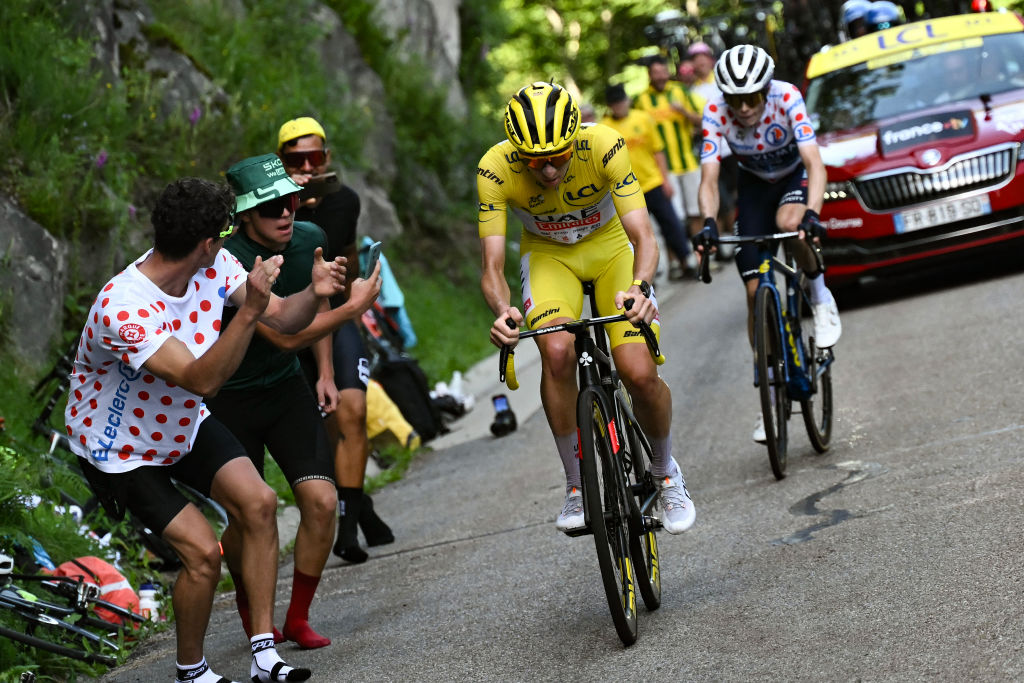
Pogacar, Wingegaard and Evenepoel were wearing skinsuits made from high-tech materials and custom tailored to be aerodynamically optimized to make them as slippery as possible in the wind, so Pogacar and the whole of the modern pack would have had a measurable advantage over Pantani, who was in the traditional jersey and bib shorts combination.
Since the rider is the biggest aerodynamic obstacle, keeping the rider’s drag as low as possible is the greatest aerodynamic advancement in modern cycling.
Tests conducted by mywindsock.com found that wearing a skinsuit at 40km/h on the flat saved over 20 watts compared to a standard jersey and bib combo. Pogacar was running a little slower on the climbs so this level of benefit wasn’t felt, but comparing the effective CdA increase at slower speeds it’s fair to estimate that Pogacar saved around 5 watts of energy over Pantani’s outfit.
Pantani was running 21mm tubular tires glued to Campagnolo box-section aluminium rims, which are lighter but don’t offer much aerodynamic advantage. In comparison, Pogacar was running a tubeless-configured Enve SES 4.5 carbon clincher wheelset, which is 40mm deep at the front and 50mm deep at the rear, with a wider rim profile optimised for 30mm-wide tires.
It’s difficult to estimate exactly what advantage would be gained by using a deeper section rim, but at 23.5km/h Pogačar definitely has the advantage in this respect.
It’s fair to say that the difference between a box section rim and a deep section carbon rim can make a difference of several watts, even when riding slowly uphill.
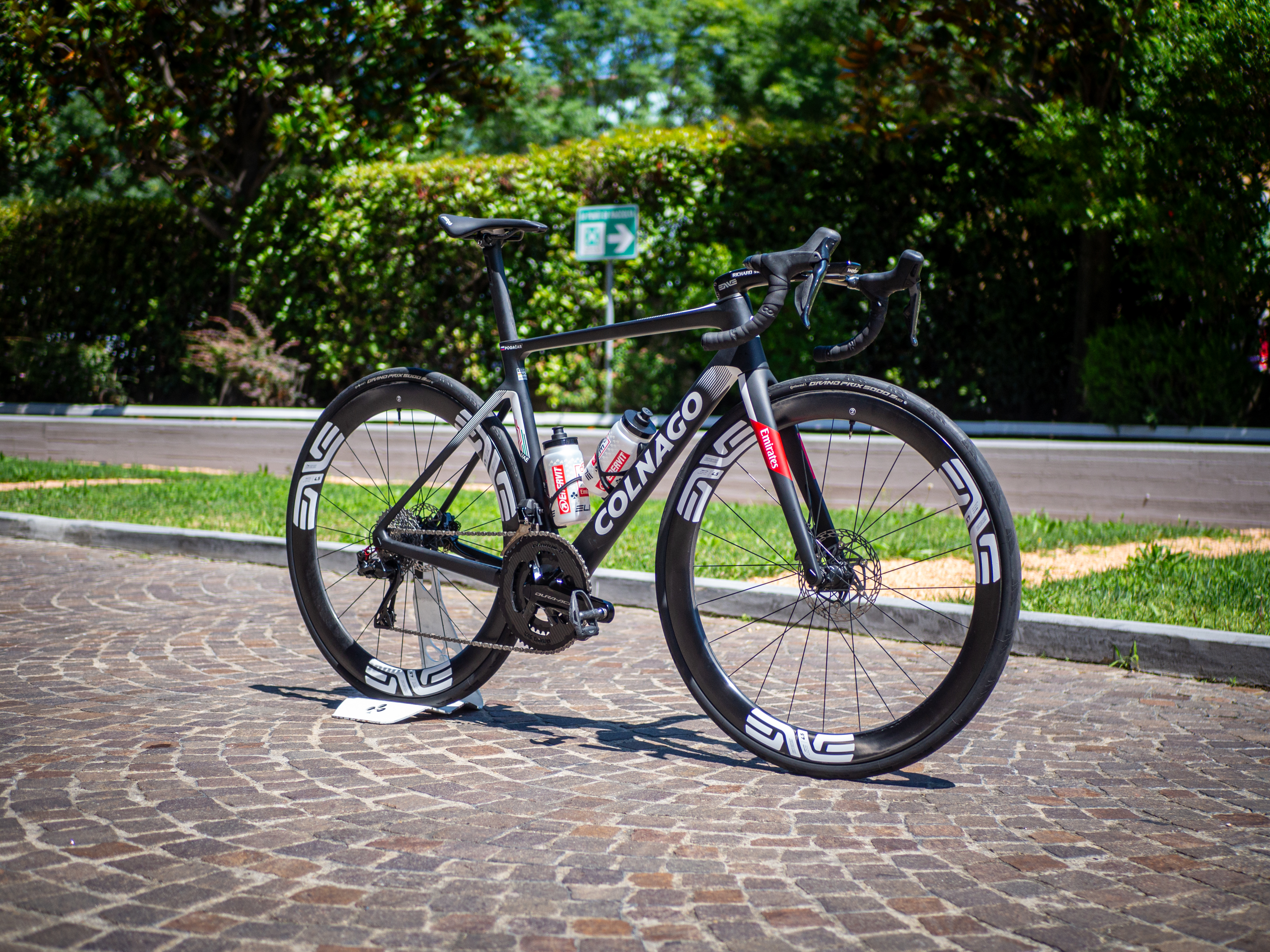
Finally, in terms of aerodynamics, there’s the frame itself: the V4RS used by Pogacar may not be a full aero bike, but compared to Pantani’s Bianchi it could be considered an aero bike.
Fully integrated cables, an aero profile cockpit and a bladed profile all allow the bike to slice through the wind. On the flats you can expect to save around 10 watts with the aero bars alone, but at the speeds Pogacar climbs these benefits aren’t as noticeable. With the entire frameset you can expect to save around 5-10 watts.
Estimation of Pogačar’s overall aerodynamic advantage: 15-20 watts (excluding riding position)
Drivetrain Efficiency
This is an area where there is still room for improvement, especially for Pogacar, who was seen to have crossed chains on climbs when sitting on the big chainring and largest sprocket in the cassette. Optimizing the chainline would save around 5 watts, but Pogacar has a clear advantage over Pantani when it comes to drivetrain efficiency through lubrication.
Modern chain lubrication significantly reduces friction losses over the lubricants used in Pantani’s time. Waxing involves covering the chain with a paraffin-based wax that coats both the inner and outer surfaces of the chain. Along with the paraffin, additives such as molybdenum disulfide micro-smooth the chain’s surface, allowing the links to link together with less friction. A good waxing process can save 6-8 watts over a premium oil-based lubricant.
Pogacar’s overall drivetrain advantages: Conservatively 6-8 watts
Tire width and rolling resistance
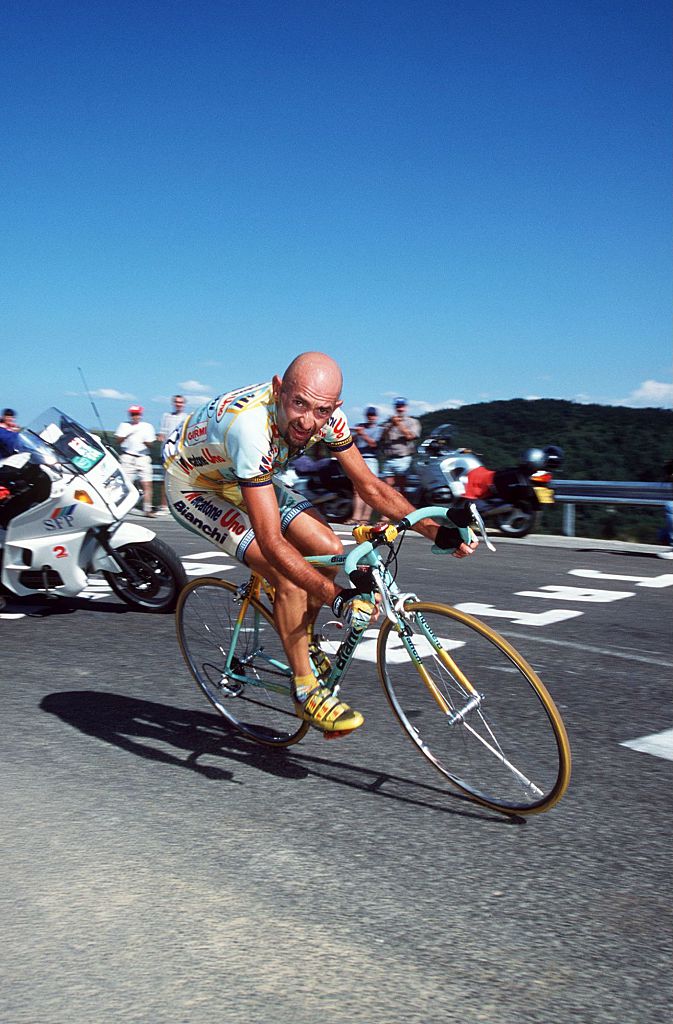
In 1998, Pantani’s Bianchi was fitted with 21mm Vittoria Corsa CX TT tyres mounted on Campagnolo’s Electron wheelset, and the thinking at the time was that thinner tyres would be more efficient as they would have a smaller contact patch and therefore less rolling resistance.
These days, this theory has been proven outdated time and time again, with riders frequently using tires over 28mm wide. The reason narrow tires are less efficient than wider tires has a lot to do with the surface they are rolling on.
If you look at the surface of a paved road under a little magnification, you will never find it smooth. Even a road that appears “smooth” has many imperfections on its surface that cause tire deformation. This deformation causes energy loss due to hysteresis.
A narrow tire’s contact patch is thinner and longer than a wide tire, resulting in a larger portion of the tire deforming against the road. In essence, a wide tire will maintain a rounder shape than a narrow tire. Without knowing the specific tire pressures used by both riders, it is difficult to accurately calculate the exact benefit.
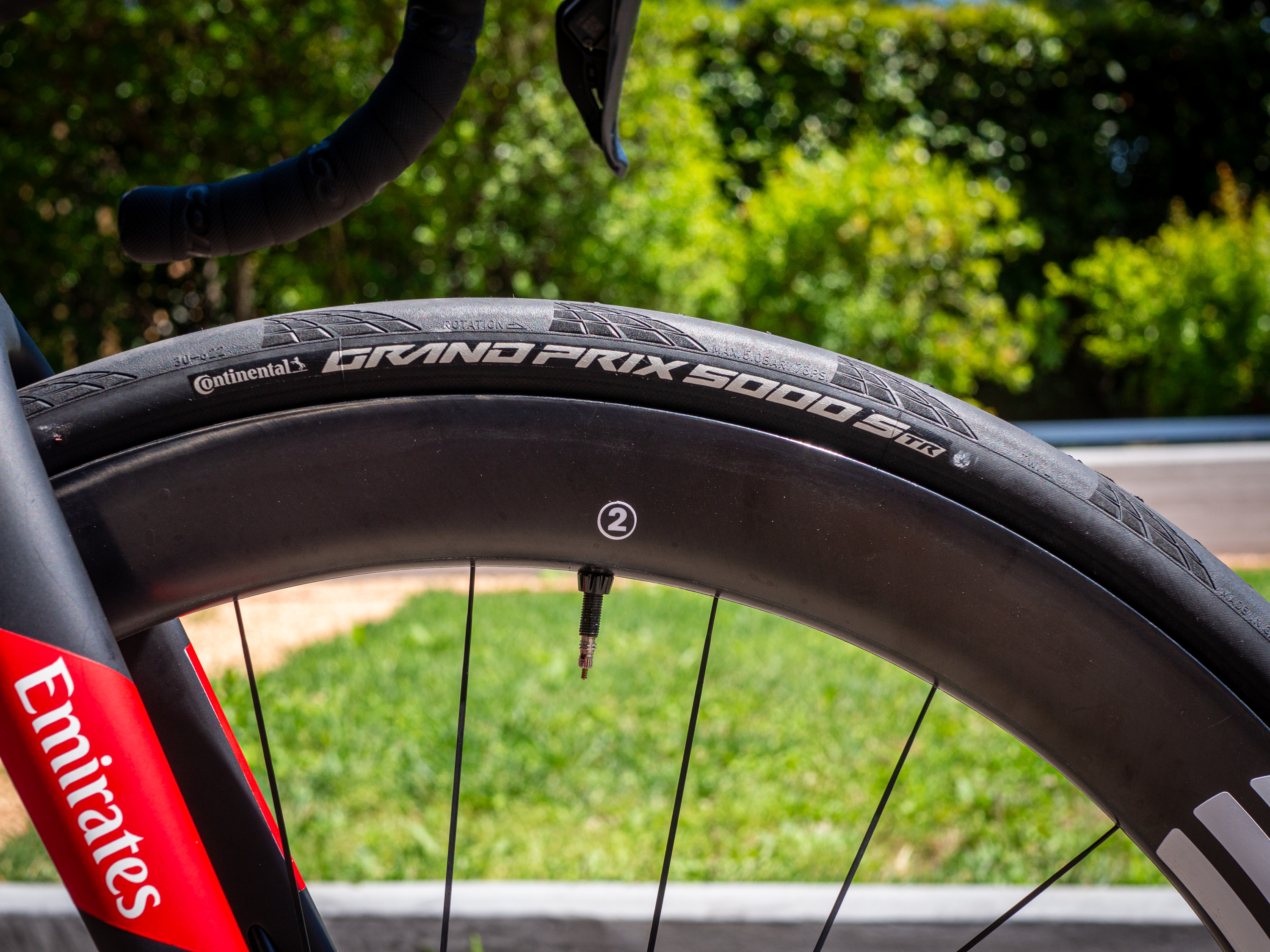
Bicyclerollingresistance.com has a wealth of data on how efficient different tires are in various configurations. While data is not available on the specific tire setup used by Pantani, the Continental GP5000s TR tubeless tires used by Pogacar roll about 5 watts faster than Vittoria’s 2014 Open Corsa CX III, which is 23mm wide. If you extrapolate this to the 21mm width used by Pantani, the difference grows to about 7 watts.
Pogačar’s total rolling resistance advantages: Approximately 7 watts
Pogačar’s overall profit
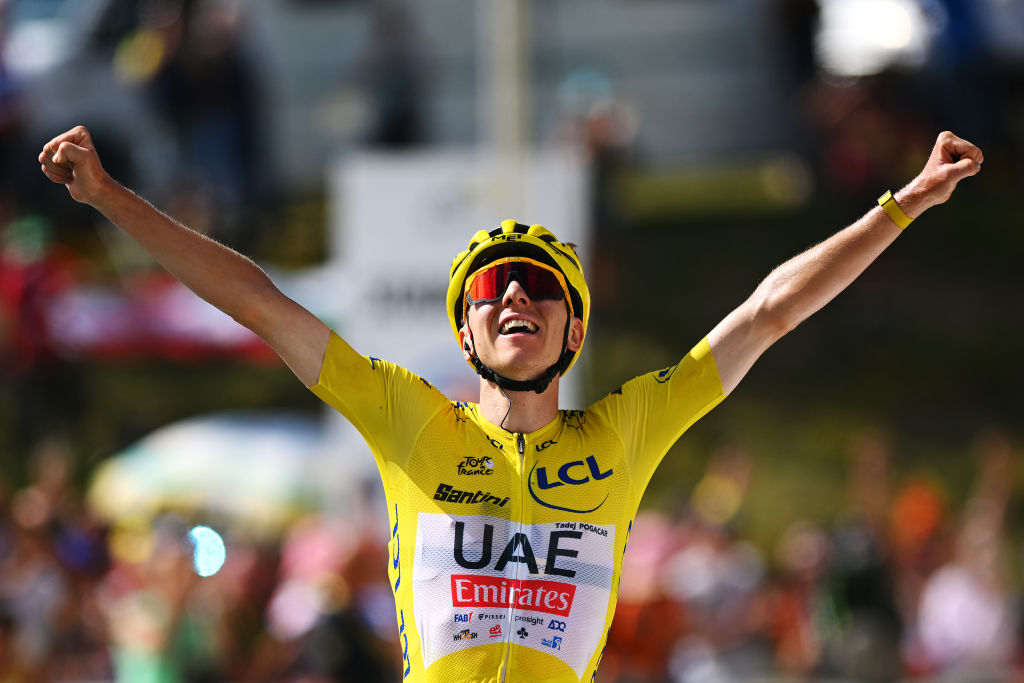
From these estimates, we can deduce that Pogačar had a technical advantage of around 40 watts over Pantani. Thus, aside from physiological and tactical factors, these advantages may to some extent explain why riders are now able to break the climbing records of the somewhat problematic protagonists of the 1990s.
Using mywindsock.com to calculate the impact of a 40-watt disadvantage on Pogačar’s performance suggests that he would have completed the 15km climb 2 minutes 47 seconds slower.
So on a technically equal playing field his performance would still be record-breaking, but the difference would have been just 43 seconds.
Advances in cycling equipment have not diminished Pogačar’s impressive performance on the climbs.
After the performance, Pogačar himself said that the accent in “Plateau de Beille” was his best performance to date.
Whether or not his bike skills were superior, Pogacar’s ride last Sunday was one of the most dominant climbing performances in the sport’s history.
Enjoy unlimited access to all our coverage of the Tour de France, including the latest news and analysis from our on-site journalists at every stage of the race. Click here for details.


